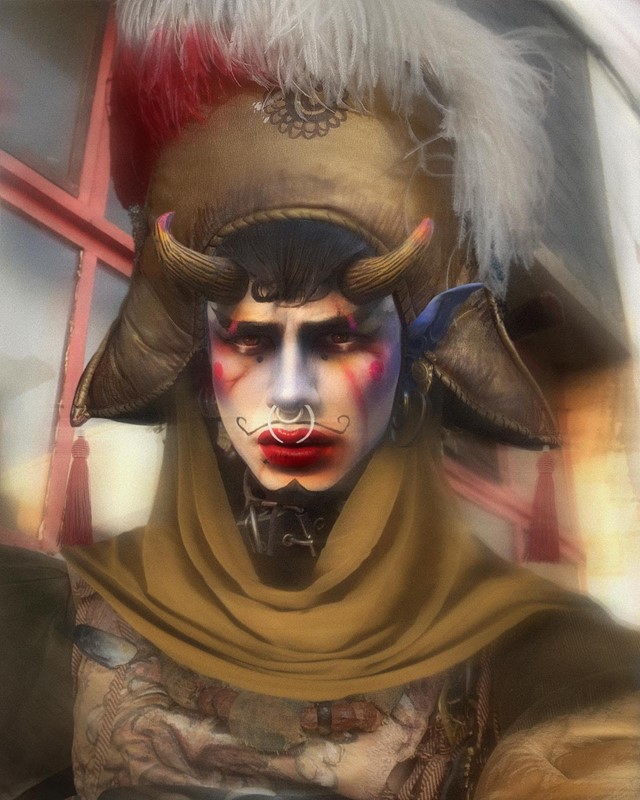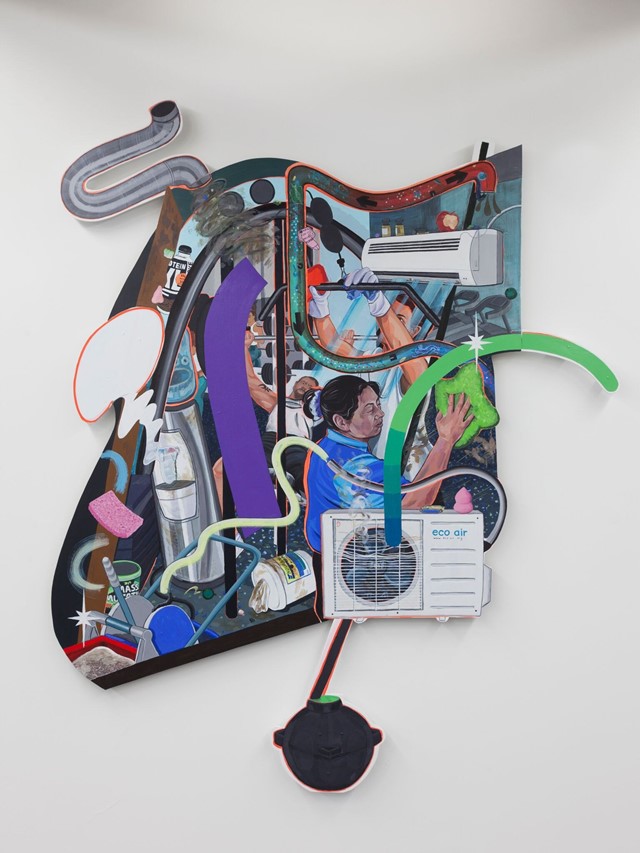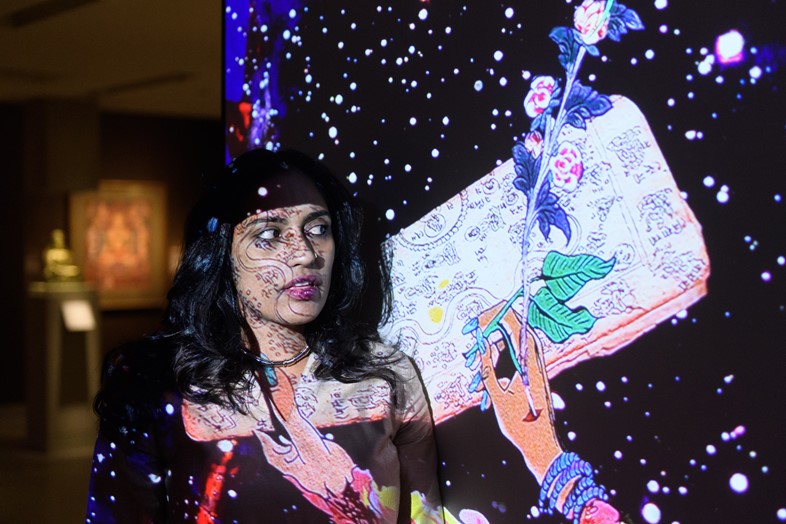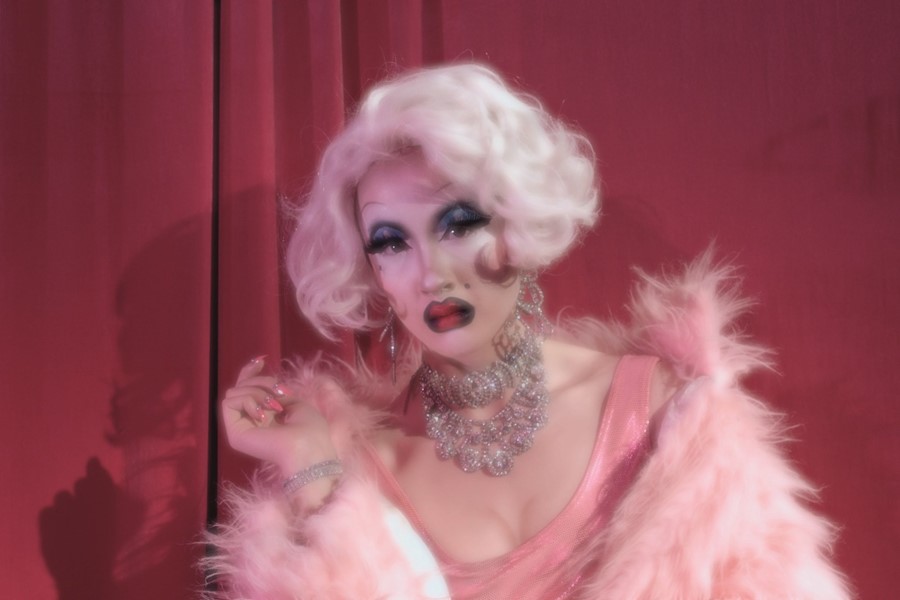A new exhibition at the Hayward Gallery, Kiss My Genders, brings together work by 30 international artists who explore gender fluidity and non-binary, trans and intersex identity
The Enlightenment desire to define, compartmentalise and stick everything in a box feels very dated today. Highlighting the urge to break beyond any category, this summer a large exhibition at the Hayward Gallery, Kiss My Genders, brings together 30 international artists who have created work that explores gender fluidity, and non-binary, trans and intersex identity over the past 50 years. Curated by Vincent Honoré, the show of paintings, installations, sculptures, photographs and films brings together works playing with drag, the history of queer space, violence, desire, the politics of marginalisation and a redefinition of self-portraiture. Here, four of the contributors consider the rigidity and representation of gender, and its role in their work and life.
Victoria Sin
“Gender is culturally constructed and reified in its representation – in societal narratives within mainstream media, science, religion. Where binary gender exists it is also being reaffirmed as natural and true, including on our bodies. As an artist who creates representations of gender it then becomes important to infiltrate normative representations, and rewrite the ways in which things like femininity are ascribed and inscribed on my body, using speculative fiction to disentangle the ways in which it is naturalised within things like whiteness and heteronormativity.”

Jenkin van Zyl
“I – especially in relation to gender and sexuality – try to see shifting sands and the humour in their contradictions. I identify as a gay man. But then, the more a person feels solid in their identity, the more constructed it is. This, and the pressure point where ideas of the original and the copy collapse, is encouraged in my films through the masked performer. During filming silicone masks act as springboards for improvisation; anonymising performers into a species of nearly human, almost-monstrous genders. These avatars are multiple, deviant and produce weird fruit. I see it as an ecstatic pleasure won through instigating your own undoing; the performances are a set of games played on thinner and thinner ice, until we believe we can walk on water.”

Flo Brooks
“Some days [my gender identity] feels close to the rural boys I grew up with, the ones that smelt of milk and arrived at school on their tractors, and others I feel a pull towards the butches and tomboys I read in novels as a teenager – Jess Goldberg, Frankie Adams, Mick Kelly. I like thinking about it as a mass of conflicting and competing textures, which people have the capacity to read, but get lazy, stuck in loops and binaries. I play with these textures in a painting, finding ways to reconfigure them, generating a narrative more complex than the one I began with. To challenge my own and others’ preconceptions yes, but also to arrive at something that feels truer of life, like a vast labyrinthine network.”

Chitra Ganesh
“Even before I had the language for it, femme was always already an anchor for me. My own femmeness was shaped via identification with strong (mostly black and brown) femme icons wherever I could find them in the landscape of popular culture and music, and queer history and club culture. This included legendary drag queens who dominated the stage at venues like Limelight, among my first encounters with club spaces, to Celia Cruz singing Azúcar Negra, Pam Grier in Foxy Brown, as well as Bollywood legends and sheroes of my childhood such as Rekha, Zeenat Aman, Smita Patil, and popular music that crossed national boundaries such as Freddie Mercury, Poly Styrene from X-Ray Spex, and Umm Kulthum. My affinity to femme emerged equally through engaging with early butch femme histories, among the first fleshed out queer narratives I encountered. A desire to articulate alternative femininities, multiple and ever-transforming rather than singular, to keep exploring the texture, complexity, playfulness and self-consciously performative nature of femme that had no interest in constructing itself for a hetero-masculine gaze, has been one of the key impulses in my approach to creating the visual iconography that populates my figuration, site specificity, and bodies in excess that often can’t be contained within their physical and material boundaries.”
Kiss My Genders is at Hayward Gallery, London, from June 12 – September 8, 2019.
